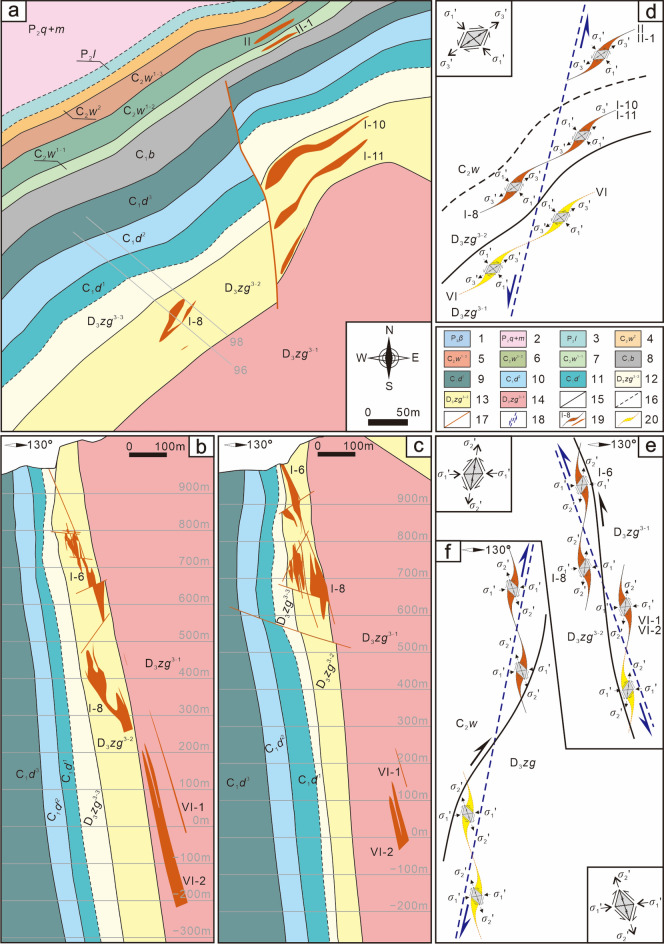Figure 7.
Schematic diagram of the spatial distributions and the underlying mechanical model of orebody groups controlled by ore-forming faults at the deposit scale. (a) Planar geological map of the 430 m middle segment of the Maoping Pb–Zn deposit, (b) Profile of the No. 96 exploration line of the Maoping Pb–Zn deposit, (c) Profile of the No. 98 exploration line of the Maoping Pb–Zn deposit, (d) Planar mechanics analysis diagram of the 430 m middle segment of the Maoping Pb–Zn deposit, (e) Mechanical analysis diagram of the profile of the Hedong region of the Maoping Pb–Zn deposit, and (f) Mechanical analysis diagram of the profile of the Hexi region of the Maoping Pb–Zn deposit. 1–Upper Permian basalt formation; 2–Middle Permian Qixia + Maokou Formation; 3–Lower Permian Liangshan Formation; 4–Middle Carboniferous Weining Formation; 5–Third submember of the first member of the middle Carboniferous Weining Formation; 6–Second submember of the first member of the middle Carboniferous Weining Formation; 7–First submember of the first member of the middle Carboniferous Weining Formation; 8–Lower Carboniferous Baizuo Formation; 9–Third member of the lower Carboniferous Datang Formation; 10–Second member of the lower Carboniferous Datang Formation; 11–First member of the lower Carboniferous Datang Formation; 12–Third submember of the third member of the Upper Devonian Zaige Formation; 13–second submember of the third member of the upper Devonian Zaige Formation; 14–First submember of the third member of the Upper Devonian Zaige Formation; 15–Conformal contact between strata; 16–Parallel non-conformal contact between strata; 17–Fault; 18–The series connection plane of orebody groups; 19–Known orebody; 20–Predicted orebody.

